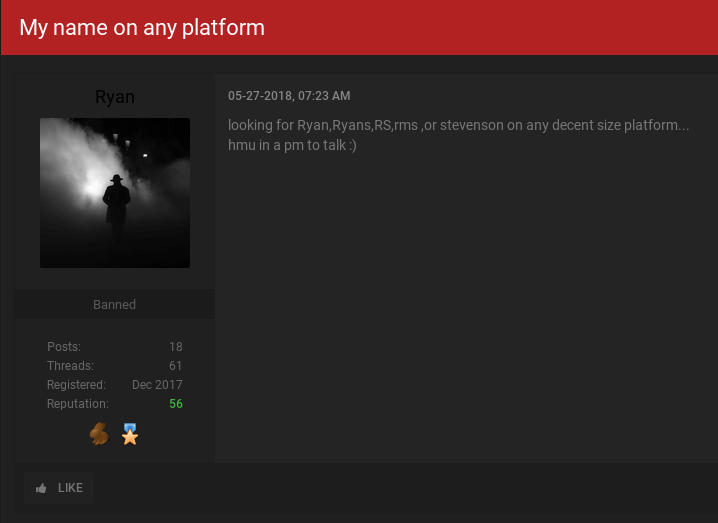Calif. Man Pleads Guilty in Fatal Swatting Case, Faces 20+ Years in Prison
mercredi 14 novembre 2018 à 21:27A California man who pleaded guilty Tuesday to causing dozens of swatting attacks — including a deadly incident in Kansas last year — now faces 20 or more years in prison.

Tyler Raj Barriss, in an undated selfie.
Tyler Barriss, 25, went by the nickname SWAuTistic on Twitter, and reveled in perpetrating “swatting” attacks. These dangerous hoaxes involve making false claims to emergency responders about phony hostage situations or bomb threats, with the intention of prompting a heavily-armed police response to the location of the claimed incident.
On Dec. 28, 2017, Barriss placed a call from California to police in Wichita, Kansas, claiming that he was a local resident who’d just shot his father and was holding other family members hostage.
When Wichita officers responded to the address given by the caller — 1033 W. McCormick — they shot and killed 28-year-old Andrew Finch, a father of two who had done nothing wrong.
Barriss admitted setting that fatal swatting attack in motion after getting in the middle of a dispute between two Call of Duty gamers, 18-year-old Casey Viner from Ohio and Shane Gaskill, 20, from Wichita.
Viner allegedly asked Barriss to swat Gaskill. But when Gaskill noticed Barriss’ Twitter account (@swattingaccount) suddenly following him online, he tried to deflect the attack. Barriss says Gaskill allegedly dared him to go ahead with the swat, but then gave Barriss an old home address — 1033 W. McCormick — which was then being occupied by Finch’s family.
Viner and Gaskill are awaiting trial. A more detailed account of their alleged dispute is told here.
According to the Justice Department, Barriss pleaded guilty to making hoax bomb threats in phone calls to the headquarters of the FBI and the Federal Communications Commission in Washington, D.C. He also made bomb threat and swatting calls from Los Angeles to emergency numbers in Ohio, New Hampshire, Nevada, Massachusetts, Illinois, Utah, Virginia, Texas, Arizona, Missouri, Maine, Pennsylvania, New Mexico, New York, Michigan, Florida and Canada.
U.S. Attorney Stephen McAllister said Barriss faces 20 years or more in prison. Barriss is due to be sentenced Jan. 30, 2019.
Many readers following this story over the past year have commented here that the officer who fired the shot which killed Andrew Finch should also face prosecution. However, the district attorney for the county that encompasses Wichita decided in April that the officer will not face charges, and will not be named because he isn’t being charged with a crime.
As the victim of a swatting attack in 2013 and two other attempted swattings, I’m glad to finally see a swatting prosecution that may actually serve as a deterrent to this idiotic and extremely dangerous crime going forward.
It’s also great to see police departments like Seattle’s taking steps to help head off swatting incidents before they happen. Last month, the Seattle Police 911 Center launched a new program that lets residents register their address and corresponding concerns if they feel they may be the target of swatting.
But it would also be nice if more police forces around the country received additional training on exercising restraint in the use of deadly force, particularly in responding to hostage or bomb threat scenarios that have hallmarks of a swatting hoax.
For example, perpetrators of swatting often call non-emergency numbers at state and local police departments to carry out their crimes precisely because they are not local to the region and cannot reach the target’s police department by calling 911. This is exactly what Tyler Barriss did in the Wichita case and others. Swatters also often use text-to-speech (TTY) services for the hearing impaired to relay hoax swat calls, as was the case with my 2013 swatting.
 As per usual, most of the critical flaws — those that can be exploited by malware or miscreants without any help from users — reside in Microsoft’s Web browsers Edge and Internet Explorer.
As per usual, most of the critical flaws — those that can be exploited by malware or miscreants without any help from users — reside in Microsoft’s Web browsers Edge and Internet Explorer.





